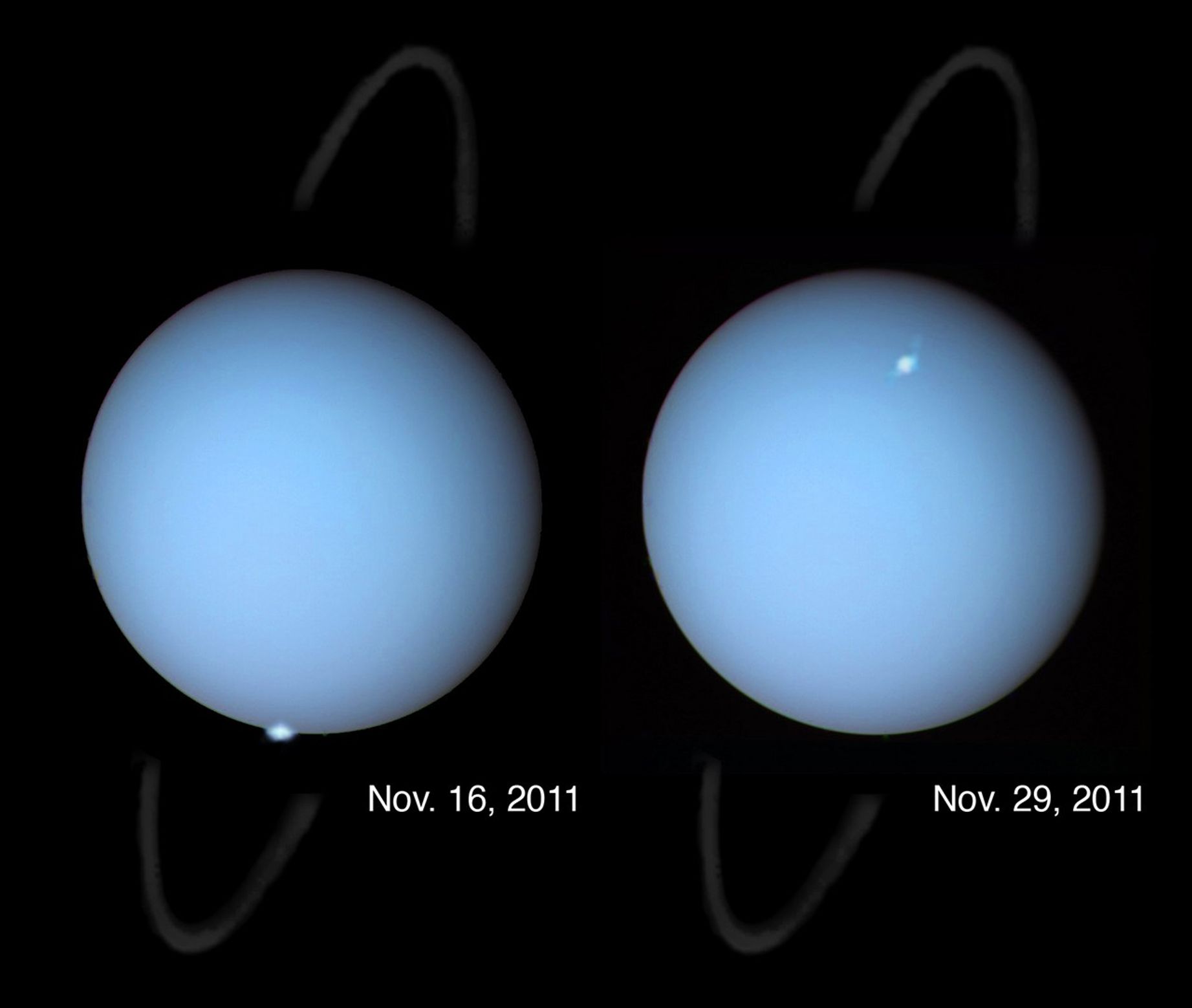1 min read
Hubble Spots Aurorae on the Planet Uranus

These are among the first clear images, taken from the distance of Earth, to show aurorae on the planet Uranus. Aurorae are produced when high-energy particles from the Sun cascade along magnetic field lines into a planet's upper atmosphere. This causes the planet's atmospheric gasses to fluoresce. The ultraviolet images were taken at the time of heightened solar activity in November 2011 that successively buffeted the Earth, Jupiter, and Uranus with a gusher of charged particles from the Sun. Because Uranus' magnetic field is inclined 59 degrees to its spin axis, the auroral spots appear far from the planet's north and south poles. This composite image combines 2011 Hubble observations of the aurorae in visible and ultraviolet light, 1986 Voyager 2 photos of the cyan disk of Uranus as seen in visible light, and 2011 Gemini Observatory observations of the faint ring system as seen in infrared light.
- Object NameObject NameA name or catalog number that astronomers use to identify an astronomical object.Uranus
- Release DateApril 19, 2012
- Science ReleaseHubble Spots Aurorae on the Planet Uranus
- Credit
Share
Details
Last Updated
Aug 17, 2025
Contact
Media
Claire Andreoli
NASA’s Goddard Space Flight Center
Greenbelt, Maryland
claire.andreoli@nasa.gov




























